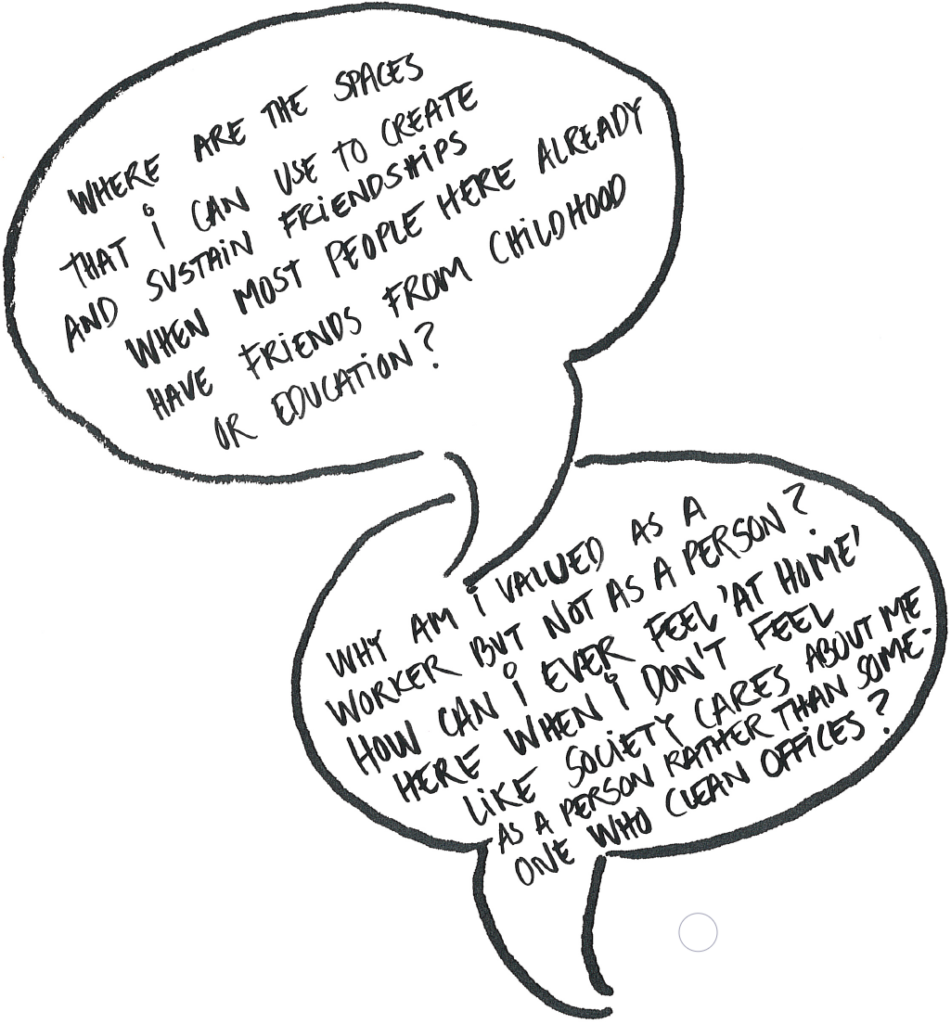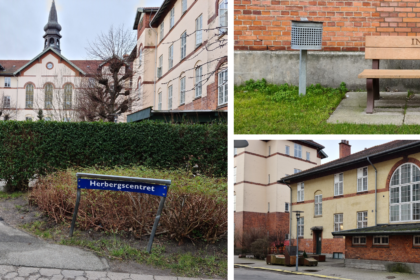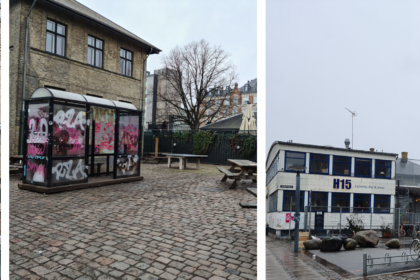Keywords: Immigration, belonging, integration, place-making, place attachment, structural discrimination, bureaucracy, fractured service system, access to services, invisiblity of services, third-sector jungle
In this resource, you will find the case “Immigration and the sense of belonging” and one related theme with questions, exercises and related materials:
You can jump to the theme by clicking the title of the theme you wish to work with.
Read the case before continuing with the themes:
THEME 1: Supporting a long-term sense of belonging
Finland has a very short history of immigration or integration on a large scale, in comparison to other Europen nations – and this effects the general awareness of the larger population. The introduction of ‘new’ or ‘different’ looking or behaving individuals has made us more aware of structural racism on the macro level, which bleeds down to actual policies and behaviors within organisations. Immigration in Finland did not really begin until the 1970s and this increase in immigration was mostly due to factors outside the country’s borders. In the 1990s, crises and wars in Europe and the Middle East began to drive refugees and asylum seekers to Finland as a safe place to escape the terror or instability in their home country. As a new arrival, the dark winters and harsh cold are a challenge for those not used to life in the great white north. The circumstances that need to be overcome are a complex mixture of physical or practical as well as emotional and social barriers. Verbal and/or behavioral racism is more visible on the streets and in the national media. Managing the lengthy immigration process and complicated system, while creating connections and a sense of belonging can frequently be seen as hurdles too difficult to manage. In the research, this ‘sense of belonging’ was a common theme.
According to May (2011), a sense of belonging can be described as a sense of acceptance among the people around you, and the ability to act and participate in a social context in a respected and acknowledged manner (as cited in Kaukko & Wernesjö, 2018). Belonging is constantly being shaped by and in the daily encounters in living and as a concept it is closely connected to other concepts such as inclusion, participation and community (Juntinen, 2018), all of which impact on the new arrival’s ability to integrate and feel a sense of belonging. Place differs from the related concept of space which is a geographical location. According to Low & Altman, place is a space endowed with meaning (as cited in Lewicka, 2008). Place attachment is a cognitive-emotional connection or bond that people develop towards the places they inhabit such as neighborhoods, coffee shops, park benches or childhood homes. Place attachment can support our sense of belonging or cause us to make poor choices for safety due to strong ties of attachment to a home or location.
In the case, you are introduced to some typical challenges facing individuals or families coming to Finland. What happens after the formal integration plan is completed? How can we support the immigrants, who are still not able to function independently, to develop a sense of belonging and have the ability to create a healthy place attachment?

Based on the case and your knowledge of the framework, begin exploring where you might find power inequalities, value conflicts and potentially unethical situations.
Based on your discussion:
- Where do you see power inequalities on the local, national or global levels?
- Identify and discuss contradictions in stated and actualized values? How do these present as ethical dilemmas?
- How can a more nuanced understanding of how global and urban dimensions influence an immigrant’s local lived experience, help social workers working locally on the front lines?
Extra material to “Supporting a long-term sense of belonging”

If you want to learn more about the integration plan you can find information on the Centre of Expertise in Immigrant Integration’s website

If you want to listen to an example of how it might feel to be an immigrant coming to a new country (in this case, the USA), you can listen to this podcast from Our Nation of Immigrants: The search for belonging (43 minutes)
References
Gifford, (2014). Ch 9. The Psychology of Place Attachment. Environmental Psychology: Principles and Practice, 5th ed. Optimal Books
Juutinen, J, (2018). Inside or outside? Small stories about the politics of belonging in preschools. University of Oulu Graduate School; University of Oulu, Faculty of Education. Acta Univ. Oul. E 179, 2018 [accessed 3.28.2022]
Kaukko, M. & Wernesjö, U. (2016). Belonging and participation in liminality: Unaccompanied children in Finland and Sweden, 2016, Childhood. Sage Publications: UK and US. http://dx.doi.org/10.1177/0907568216649104 [accessed 3.28.2022]
Lewicka, M. (2008). Place Attachment, place identity, and place memory: restoring the forgotten cit5y past. Journal of Environmental Psychology 28, 209-231.




